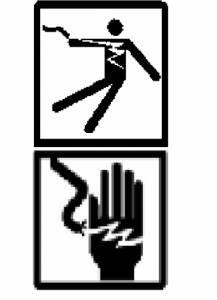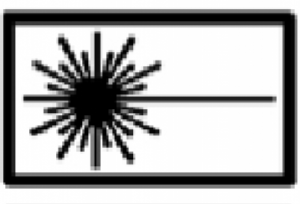Rebecca E. Burnett
Even though I’m a rhetorician—or perhaps because of it—I am often asked why anyone would want to learn about rhetoric, especially when we read headlines that suggest rhetoric signals language and actions, which are, at best, naïve and ineffectual but more likely deceptive and manipulative:
Chicago Tribune headline: “Rhetoric won’t solve minimum wage issues” (Jan. 12, 2014)
Irish Times headline: “Government’s ‘windy rhetoric fools nobody’” (Feb. 12, 2014)
Phys.org headline: “Cutting through the rhetoric on hunters vs. wildlife” (Jan. 22, 2014)
However, an older understanding of rhetoric exists, a definition crafted by Aristotle: “Rhetoric may be defined as the faculty of observing in any given case the available means of persuasion” (Rhetoric, bk.1, chpt. 2, http://rhetoric.eserver.org/aristotle/rhet1-2.html). Rhetoric was not only useful in the 4th century BCE for persuading audiences to resolve practical problems. The same principles apply today as we consider ways in which people create, disseminate, interpret, and use written, oral, and visual communication—regardless of context, regardless of creative processes being individual or collaborative, regardless of media, and regardless of modality. Rhetoric helps us more effectively create and disseminate ideas as well as interpret and use those ideas.
While the courses I teach have distinct outcomes and assignments, I have broad objectives for my students, regardless of the course. They need to become independent thinkers […]
Research. Rhetoric is at the heart of my research, one aspect of which involves investigating communication about risk. As a rhetorician, I am interested in asking questions about the ways in which meaning and action are influenced by the culture and contexts in which information is created and used, the argument interpreted by the audiences, and the design of information. My investigations have ranged from 17th-, 18th-, and 19th-century visual depictions of smallpox to politics and policies related to condom instructions; from black box warnings on over-the-counter and prescription medications to hazards of social media for girls and women; from Yucca Mountain as a repository for nuclear waste to American National Standards Institute (ANSI) and International Organization for Standardization (ISO) icons signaling workplace hazards. While these projects seem, on the surface, dramatically different, they all reflect my interest in investigating ways people depict risk.
Can the results of risk communication research actually help people become better informed or safer? Yes. For example, my study about safety icons confirmed several points about their design, three of which I summarize here:
 Scale matters: An icon needs to be sufficiently large for users to discern what’s depicted. Only 76% of study participants (all college-educated, employed, professional adults) correctly identified the body icon (to the right) as signaling an electrical hazard. The scale is too small and the icon too ambiguous for participants to correctly interpret the hazard. However, 100% of participants correctly identified the larger hand icon with a frayed wire as an electrical hazard.
Scale matters: An icon needs to be sufficiently large for users to discern what’s depicted. Only 76% of study participants (all college-educated, employed, professional adults) correctly identified the body icon (to the right) as signaling an electrical hazard. The scale is too small and the icon too ambiguous for participants to correctly interpret the hazard. However, 100% of participants correctly identified the larger hand icon with a frayed wire as an electrical hazard. Position matters: Only 30% of participants correctly identified this hand icon as signaling a hot hazard. In this case, two problems contribute to confusion: placement of the hand over the hazard and participants’ lack of confidence about what the hazardous material represents.
Position matters: Only 30% of participants correctly identified this hand icon as signaling a hot hazard. In this case, two problems contribute to confusion: placement of the hand over the hazard and participants’ lack of confidence about what the hazardous material represents. Abstraction matters: Only 22% of participants correctly identified this icon as signaling a laser hazard. Both oversimplification and abstraction reduced participants’ comprehension.
Abstraction matters: Only 22% of participants correctly identified this icon as signaling a laser hazard. Both oversimplification and abstraction reduced participants’ comprehension.
Teaching. Like many of my colleagues in the School of Literature, Media, and Communication, I connect my research and my teaching. Rhetoric is at the heart of courses I teach. While the courses I teach have distinct outcomes and assignments, I have broad objectives for my students, regardless of the course. They need to become independent thinkers who can analyze communication problems; understand individual, organizational, and cultural conditions that affect these problems; and analyze as well as create effective written, oral, and visual artifacts. Because the majority of workplace artifacts result from collaboration, my courses include a range of collaborative activities: face-to-face and blog discussions, pair and team composing, peer review, and public exhibitions.
Students often enter a class about technical communication with misconceptions, believing that it is entirely factual, only uses templates, focuses on skills, and emphasizes mechanics. Are these elements part of technical communication? Yes, but only a part. What’s more important? Strategic decisions about rhetorical factors (for example, context, purpose, audience, argument, organization, evidence, visuals, and design, and, yes, language conventions) all influence accessibility, comprehensibility, and usability. Simply put, technical artifacts are not created or used in a vacuum. An unsuccessful technical artifact is one that is ignored. A successful one is always in some way persuasive, convincing audience(s) to read or listen to or view the information and respond in a safe and appropriate way.
To create usable artifacts, students need to understand the why behind the what. In becoming effective communicators, students learn that reading/writing, designing/viewing, and speaking/listening are synergistic. They become sophisticated in balancing verbal and visual information and using different modalities with various media. They consider socio-cultural factors—for example, ethics, economics, and environment—that shape and shade audience reactions, interpretations, and decisions about use.
So now, jump back to my explanation about safety icons. Imagine students reading the study—and then creating their own ANSI- and ISO-compliant and usable hazard icons that address, among many other things, the challenges of scale, position, and abstraction. Full circle. Research and teaching are parts of a coherent whole.
